Economy & Business
Is life in Taiwan back to normal?
After the initial shock of the Covid-19 pandemic, how have people adapted and how are they feeling and acting one year on?
By Mike Jewell
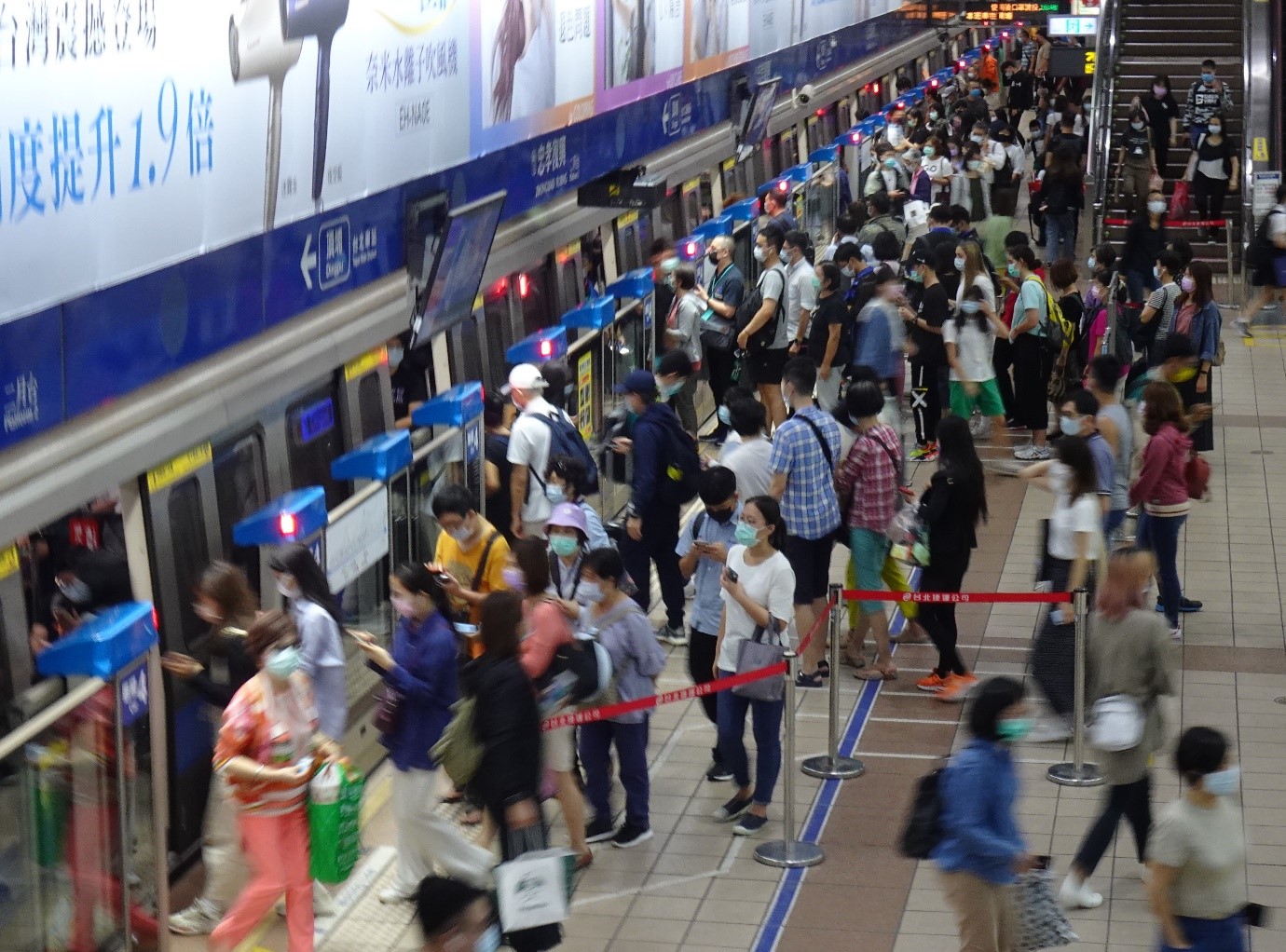
The break from 'normal'
It is almost a year since the news first leaked out of China about a previously unknown zoonotic virus that had begun spreading in Wuhan. From that point on the world turned upside down. The first few months of the year here in Taiwan were a period of uncertainty and fear but also a period of immediate and decisive action by the government, which until now has kept us protected against Covid-19 and allowed us to lead our lives with relatively little disruption. Meanwhile, Europe, the US and others remained in a state of denial for far too long before having to confront the disastrous societal and economic results of their arrogance and inaction.
On the very last day of 2019, Taiwan health officials communicated their fears about this “unidentified pneumonia from China” to the World Health Organisation. That communication fell on deaf ears, but, at the same time, the Centers for Disease Control (CDC) initiated their own plans to keep the virus at bay, starting with screening of all inbound passengers from Wuhan.
The first confirmed cases appeared in late January, just before Chinese New Year and, over the next four months, as Covid-19 marched unabated across the globe, a series of ever more wide-ranging measures were introduced. All face mask production was requisitioned, and manufacturing ramped up to meet domestic demand. Holiday tours from Taiwan were suspended and all foreign visitors were banned. Passengers in transit were barred from entering the country and mandatory 14-day self-isolation for all returning Taiwanese was imposed. School openings were delayed by two weeks after the Chinese New Year holiday. Tight restrictions on indoor and outdoor events were brought in when a renowned visiting musician tested positive after performing with the National Symphony Orchestra. Face masks became obligatory on public transport and hostess clubs and ballrooms were closed.
Significantly, though, the government never deemed a formal lockdown necessary of the type that was inflicted upon Wuhan and many countries in Europe and elsewhere and most shops, bars and restaurants were allowed to remain open.
There was ready public compliance with the regularly updated mandates and guidelines from the Central Epidemic Command Center (CECC) on minimising the chances of community virus transfer, by avoiding large indoor and outdoor gatherings, by social distancing, wearing masks and by not travelling.
However, in those first fraught months of the crisis, there was enormous public concern. The pandemic was spiralling out of control beyond our borders and it seemed almost inevitable that we would suffer the same fate. The collective nervousness was palpable: a hand extended in greeting seemed like an invitation to dip one’s fingers in an acid bath; a sneeze or cough nearby set pulses racing and cleared the immediate area; a simple walk in the park consisted of a complex routing of zigzags, great circles and U-turns to avoid breaching the 1.5 metre contagion zone.
In a Kantar study from mid-March, 94% said they were "worried" about the pandemic, in terms of their own and their families’ health and in terms of the likely impact of the inevitable economic downturn, with the possibility of job cuts and the erosion of personal savings and investments.
These fears brought about major changes in behaviour. Google's Community Mobility monitoring reports showed an 18% drop in customers in April-May for restaurants, cafes, shopping centres, museums, libraries, and cinemas, while time spent at home was consistently higher than in pre-Covid-19 times.
There was a big drop in the use of transport services. The Taipei MRT network carried 23% fewer passengers in March-May than a year earlier and data from transport app Moovit and from Apple confirmed that public transport use across Taiwan as a whole was off by over half at that time.
The trend towards staying at home coupled with people's fear about the pandemic resulted in big changes in media habits and purchasing. There was a big rise in TV viewing right after Chinese New Year, when school holidays were extended by two weeks and social media use skyrocketed. And digital engagement extended beyond social media, as a wide cross section of consumers turned increasingly to online channels for purchasing, for managing their daily affairs and for entertainment.
Total retail spending was relatively unchanged, but there was a pronounced shift in demand, with big increases in home cleaning and personal hygiene products, health and nutrition supplements and fresh produce, accompanied by significant declines in luxury goods, alcohol and other beverages, make-up and beauty products and meat and seafood.
E-commerce retailers benefitted massively, but so did large grocery chains, as shoppers opted for the perceived safer environment of the modern store over the riskier outdoor traditional markets. Conversely, department stores, the bedrock of Taiwan's contemporary consumer shopping spree, bore the brunt of consumers choosing not to go out and holding back from luxury items, clothing and beauty products.
"The world has been put in a Great Lockdown. The magnitude and speed of collapse in activity that has followed is unlike anything experienced in our lifetimes." – IMF, April 2020
With this gloomy observation the IMF confidently predicted that, as part of a severe contraction in economies worldwide, Taiwan’s GDP would shrink by 4% this year. The government scoffed, saying the IMF “didn’t understand” the Taiwanese economy and stuck by its own predictions of a modest increase in 2020.
Six months on and the IMF now concedes that Taiwan won’t shrink, but the government continues to be more bullish, insisting that the IMF is undervaluing Taiwan. The National Development Council (NDC) has projected that Taiwan will enjoy annual GDP growth of over 1.8% this year. Q2 was difficult, but, overall, the economy grew 0.78% from January to June and momentum accelerated in the third quarter on the back of an increase in industrial production and exports. The local electronics sector in particular has benefited from the global booming “stay at home economy,” which has boosted demand for technology devices, much to Taiwan’s advantage.
Seen from a distance, then, Taiwan seems to have weathered the Covid-19 storm better than most, having seemingly achieved the impossible of both combating the outbreak and maintaining a respectable level of economic growth.
But what of the situation at home? How are Taiwanese consumers feeling and behaving now?
Back in February and March, as we looked on in horror at what was happening beyond our borders and before it became clear that Taiwan had the virus under some degree of control, there was the inevitable knee-jerk reaction I described earlier, with seismic shifts in consumer behaviour and a devastating impact for many individual businesses. The effect was felt most starkly in the second quarter, when private consumption fell 5.1% from a year earlier, with retail sales down 5.8% and sales generated by food and beverage vendors down 12.4% (according to the Directorate General of Budget, Accounting and Statistics, DGBAS).
By May, our situation was stabilising and, after several days of no new domestically transmitted cases, the government began considering easing some restrictions. To some acclaim worldwide, the Chinese Professional Baseball League opened with fans in attendance and, in June, it was considered safe for the National Concert Hall, National Theater and other venues to hold events again, although all members of the audience had their temperatures checked on entry and had to wear masks.
Consumer confidence was starting to return gradually, after the index produced by the National Central University had shown sentiment in May to be at its lowest level since the global financial crisis.
"A lost season for the tourism industry" (Taipei Times, March 17th), perhaps not
While some of the border restrictions were eased, albeit partially and still with very close surveillance, visitors to Taiwan were as rare as hens’ teeth. At the time of writing, deep in November, inbound and outbound passenger flows are just a fraction of what they were a year ago. The Tourism Bureau figures show that the combined number of arrivals and departures in the whole of September was just 55,000 compared with 2.2 million in the same month last year and the decline over the year so far is in excess of 80%.
Furthermore, the government has just announced that stricter entry requirements will again come into force on 1 December, as the virus takes an even stronger hold across Europe, the US, Russia, Japan, Korea and elsewhere. New imported cases are being reported every day here and, although the numbers are tiny compared to other countries, these enhanced measures aim to ensure Taiwan is able to keep the virus at bay in the face of an expected increase in international arrivals over the winter holiday period and particularly around Chinese New Year.
The Tourism Bureau estimates that foreign visitor arrivals in 2020 will be just 1.4 million, a drop of over 10 million compared to last year. That many missing people cannot fail to have a major impact on the economy and indeed the tourism industry, airlines, travel agencies, hotels, B&Bs and restaurants suffered a huge hit from the very onset of the crisis. The situation was exacerbated by the cancellation or postponement of major cultural and trade events including COMPUTEX and by the conversion of others to virtual events. Occupancy rates in Taipei hotels plummeted to around 10%, down from the usual level of 75%.
While there was financial support from government for tourism and hospitality businesses, some hotels were partially or totally shuttering to undertake long planned renovations, while others were forced to close altogether, along with many restaurants, bars, and eateries.
However, outside of Taipei the situation turned around quickly. Faced with not being able to holiday abroad, large numbers opted to explore different parts of Taiwan, encouraged by central government consumer subsidies totalling NT$5.5 billion and additional incentives from local authorities. Travel operators have seized on the increased interest with a vastly increased range of domestic travel deals and throughout the summer months it was almost impossible to find rooms in hotels and resorts in central, eastern or southern Taiwan or on the outer islands of Penghu, Matsu and Kinmen. The surge in visitor numbers in Penghu was such that popular locations were completely swamped with visitors and the lives of local residents disrupted, with many places reporting low water pressure and an acute shortage of hotel rooms, rental vehicles and tour buses.
The Tourism Bureau anticipates that the number of domestic trips (charmingly named "disease prevention tours"!) in 2020 will top 210 million, a jump of 24% from 2019 and President Tsai Ing-wen has said that the government’s promotion of domestic tourism would ultimately generate NT$63.5 billion for local businesses, as 17.25 million people switch their attention and their spend from non-existent overseas travel options.
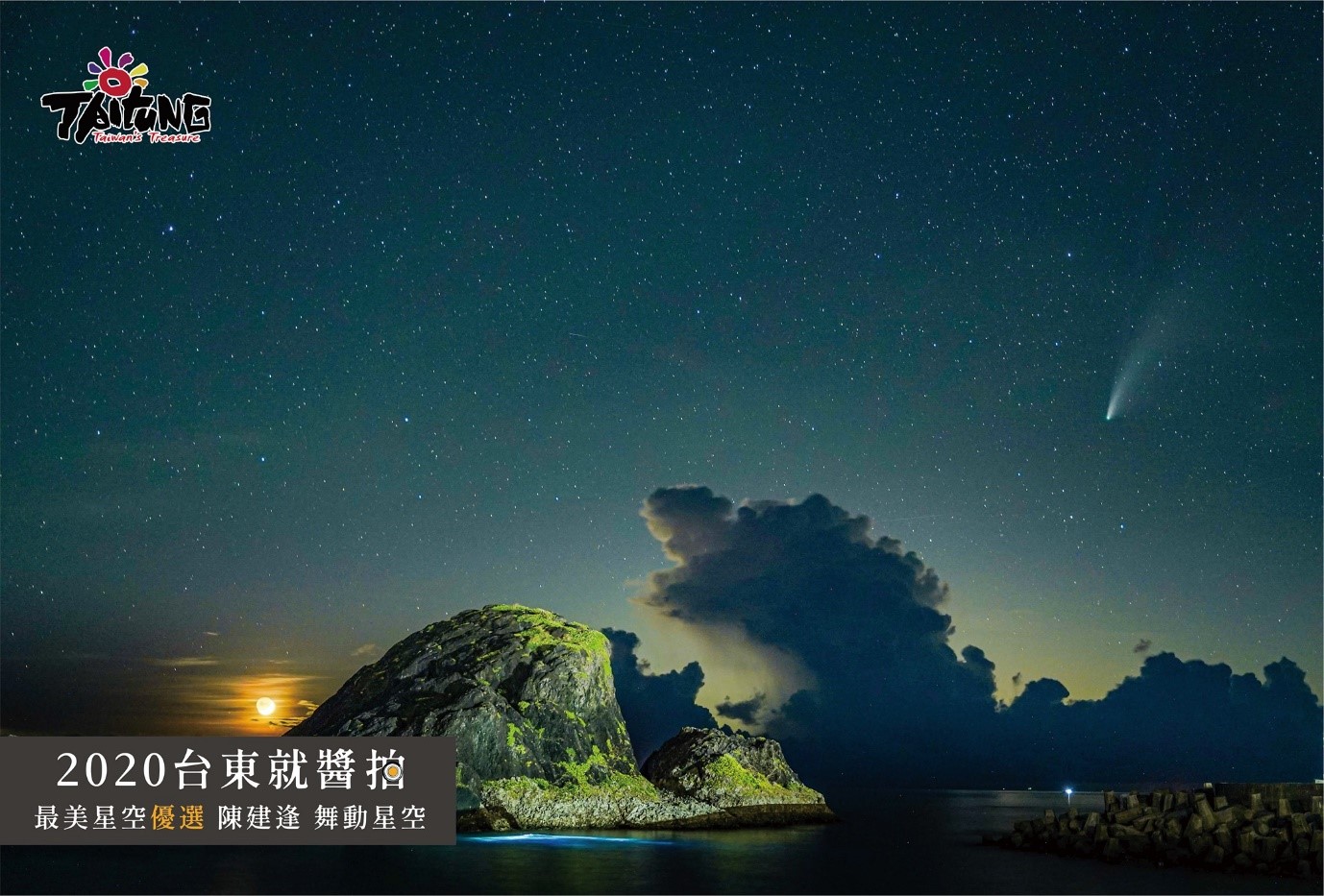
Source: Amazing Taitung Facebook page
"The world is so contaminated and we are so clean"
More broadly, energy is returning to daily life, as immediate fears over personal health and financial stability recede and the government’s financial stimulus measures have served as a trigger for personal spending.
A new survey from Kantar and LifePoints shows that public concern is greatly reduced compared to last March, even as the pandemic rages seemingly unchecked across large swathes of the planet. When this survey was completed, at the end of October, 76% said they were “worried” about Covid-19, still a high figure, but also a big drop of 18 points from a similar study in March. More tellingly, the proportion who claimed to be “very worried” fell from 30% to 10% and the earlier intense concern about the economy and personal health was much less in people’s minds.
Evidence of returning confidence is everywhere.
In October, unemployment dropped for the sixth consecutive month, to 3.8%, comfortably below the public “panic threshold” of 4% and Ministry of Labor reports show that the number of furloughed workers has come down steadily from its peak in June.
Retail sales are showing good growth once more, with record monthly spending in both September and October, according to the Ministry of Economic Affairs (MOEA). Over the third quarter as a whole, retail sales rose by 4.6% compared to the third quarter of 2019, on the back of Ghost Month promotions in September and department store anniversary sales in October.
Online retailers continue to reap the benefits of the growing stay-at-home economy that has remained strong since the pandemic began, reporting better than 20% year-on-year sales growth during Q3.
The food and beverage industry is also showing signs of life, as eating out is regarded as safe once again. Restaurant revenue was up 2.1% from a year earlier in September and rose again in October.
Supermarket shelves are well stocked with toilet paper and instant noodles – no more panic buying.
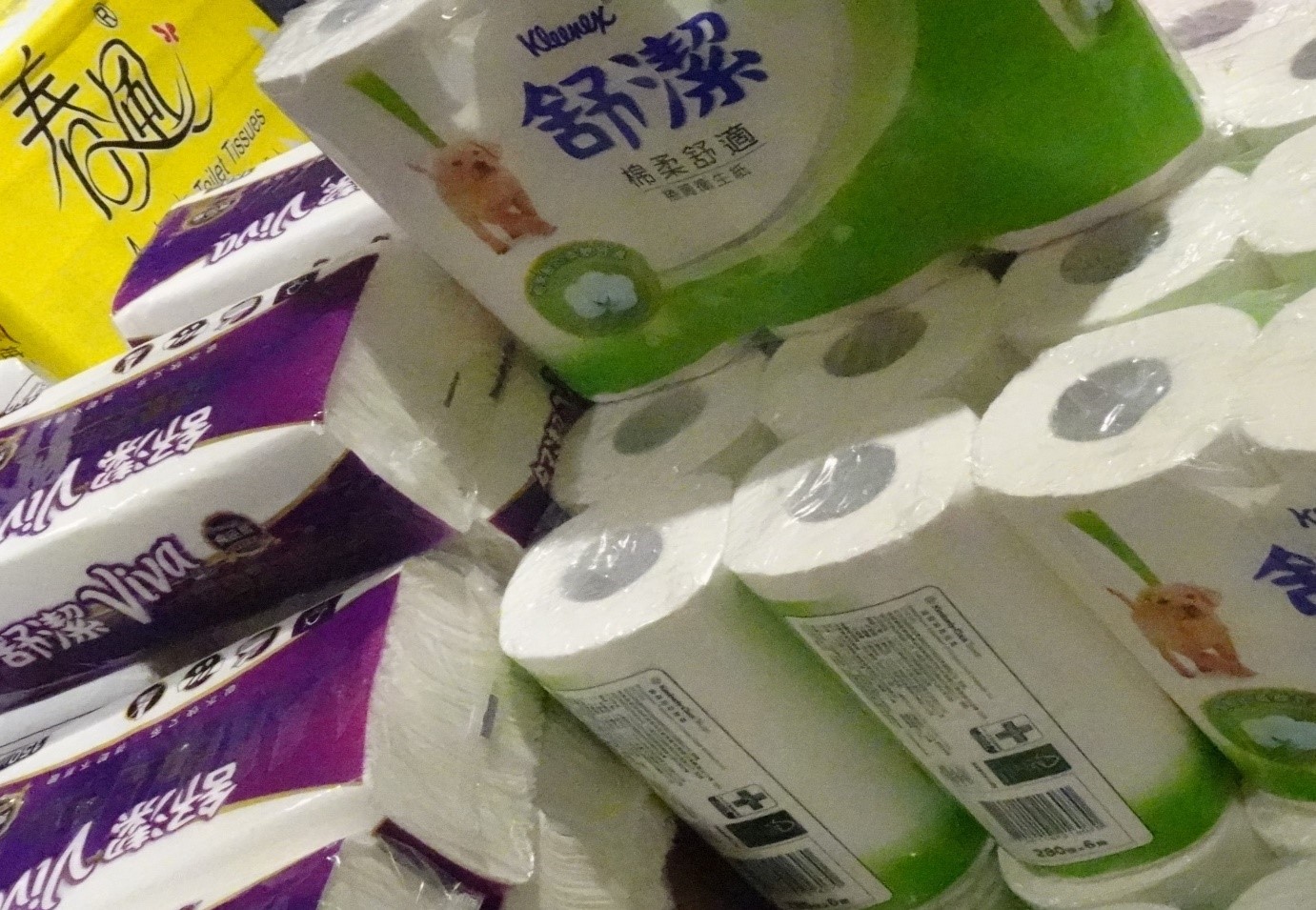

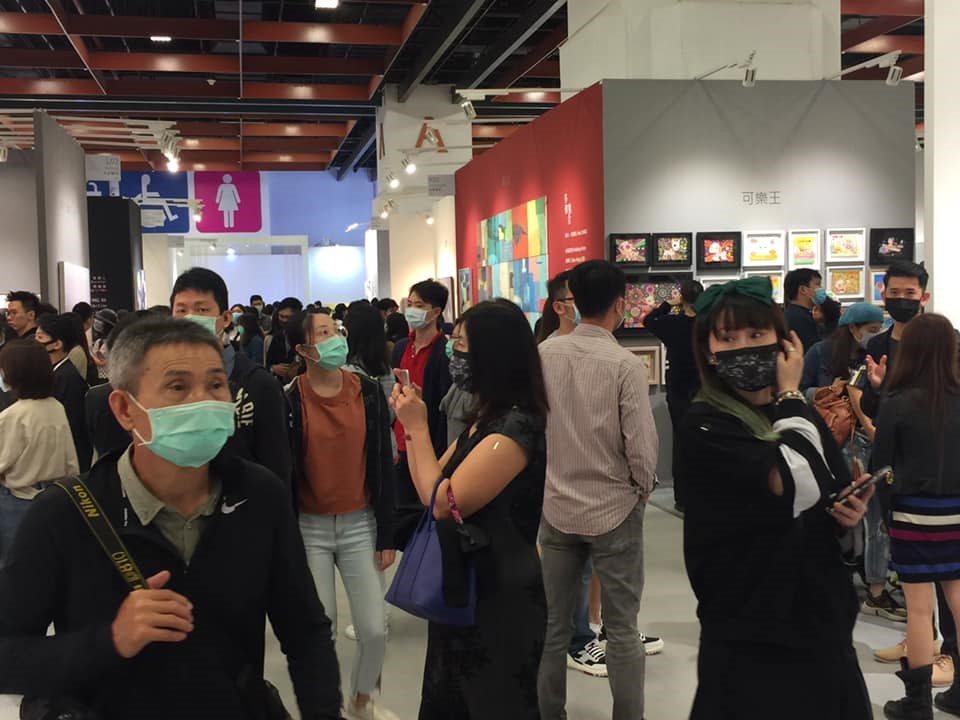
Top: Taipei Jazz Festival, Da’An Park
Bottom: Art Taipei
Many cultural events are going ahead as planned, with high levels of attendance, such as Art Taipei, the Taipei Jazz Festival, and the Nuit Blanche festival.
Public transport has become popular again - in October, the Taipei Metro carried 35% more passengers than in April.
Very few are still working from home. Only around 10% of staff worked from home at any one time and the companies that introduced WFH policies have now largely scrapped them.
The school year has proceeded uninterrupted, sine the enforced extension of the Chinese New Year holiday, but with regular temperature checks, increased hand washing and face masks and tight controls on campus visits from non-students.
And hospitals are back in business! Compared to a sharp drop in the number of medical visits from January-June, people have returned to hospitals as the fear of coronavirus cluster infections has largely gone away.
All very encouraging and positive, and the upbeat reports emerging about the progress in the developments of vaccines is likely to boost optimism further, but are we really back to where we were pre-Covid? Emphatically no! And we certainly won’t be until it becomes possible to travel the world as freely as before, a prospect which now seems more distant in the light of the enhanced restrictions coming in on 1 December.
However, when I talked to a number of people in preparing this article to try to gauge the prevailing mood, the majority told me they were feeling far more settled than back in March and that their daily lives were much less dictated by coronavirus fears now.
One young mother told me “I feel relatively safer than six months ago. Previously, we stayed at home most of the time. Right now, I’m more willing to bring my young son out (with masks). It seems back to normal, except no travel overseas and fewer concerts and exhibitions.”
A former colleague said something similar. “Six months ago, I stocked up a lot on safety stock at home, and I did spend less due to uncertainty over the global situation. We did avoid going to restaurants and cinemas previously, but now our frequency of going to restaurants is the same as before the pandemic.”
A senior company executive summed it up this way: “There are two conclusions to the pandemic – the medical end, when the virus is properly under control all over the world; and the social end, when it is no longer constantly in people’s minds. Up to a point, it feels like, for many people in Taiwan, it has almost reached the social end. They barely pay it any attention.”
At the same time, the global situation is still troubling and many harbour serious concerns that Taiwan’s current position of safety could easily be undermined. Two of my contacts made the following remarks:
“At the back of my mind I’m worried about the possibility of widespread domestic infections sooner or later. Many people come back to Taiwan each day and the Covid-19 test isn’t always accurate – false positives, false negatives, asymptomatic infections etc. And people here have become negligent, less careful. These could all add up to a bigger risk.”
“I didn’t let my guard down too much knowing the second wave in the EU is coming, and the US is nowhere near its end. Taiwan still has a high risk of possible local transmission. Fingers crossed.”
This caution is reflected in the latest Consumer Confidence Index (measured in October) which dropped back slightly as uncertainty about the US presidential election and a resurgence in global COVID-19 inflections weighed on sentiment, despite improving economic conditions here. It is also worth noting that, despite some recovery from the deep hole of public pessimism back in May, the overall mood is still considerably more negative than in January.
Furthermore, while there are encouraging signs of a rebound for retailers and food and beverage establishments, the recovery in domestic consumption is limited so far. DGBAS figures showed a drop of 1.5% in the third quarter over the same period in 2019 and Chung-hua Institute for Economic Research (CIER) are forecasting a drop for the whole year of 1.5%, even as Taiwan’s strong export performances boosts GDP.
Even though people are back doing much of what they were doing a year ago, reminders of the pandemic are never far from view and will surely be around for the foreseeable future. Public health messaging is widespread; temperature checks are administered in many public places, at some public transport hubs and at public events, although restaurants, coffee shops and bars are now deciding for themselves whether to continue the process; some food courts still have protective dividers in place, to keep diners apart; hand sanitisers – most of them in working order – are widely available; and masks are demanded on buses, trains and subways, as well as at indoor arts performances.
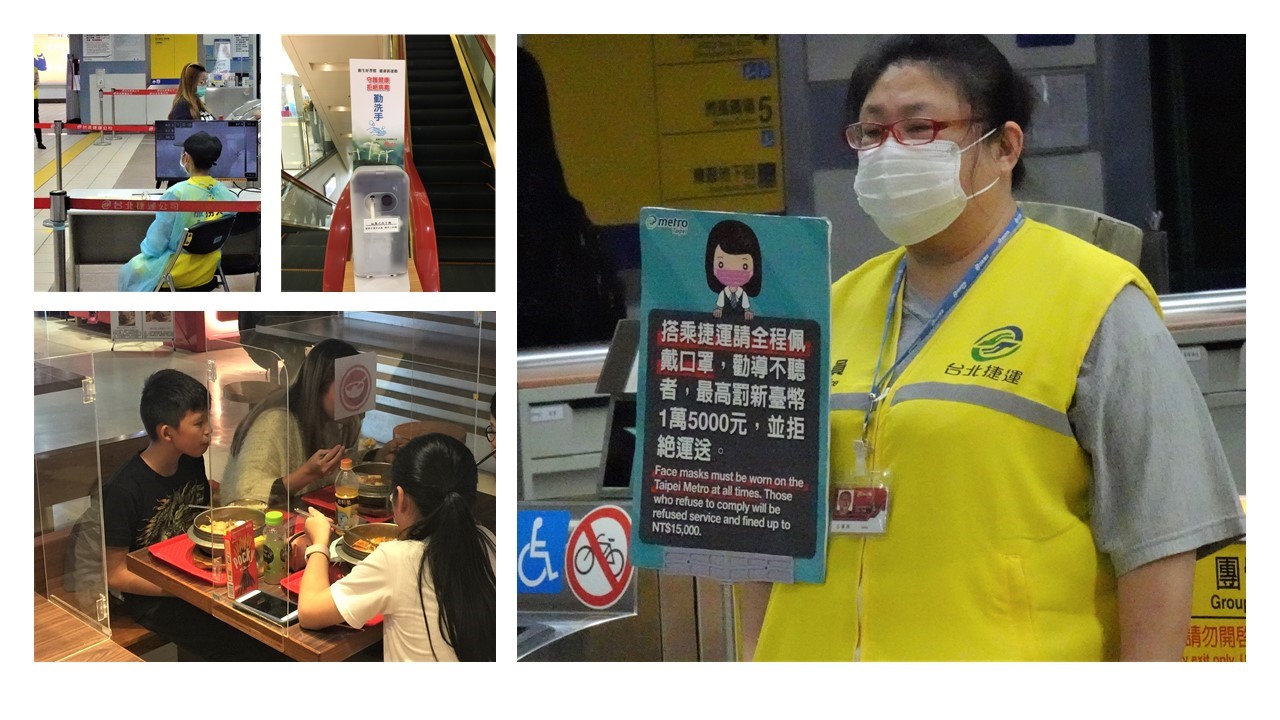
In fact, mask wearing, which began to be adopted after the SARS outbreak in 2003, has become much more common generally, an automatic habit, as much as a matter of mandated behaviour.
“I rarely wore a mask before Covid (only when I'm actually sick), but I've been wearing one every day since February.”
“We are so lucky in Taiwan at the moment. With a face mask on we can do pretty much what we want. We golf and dance as usual! And we still eat out in restaurants.”
Thankfully, we see little of the nonsensical indignation so prevalent in Europe and the US, linking mask wearing to infringement of personal liberty. In fact, it seems likely that key aspects of the disease control strategy, such as masks and frequent hand washing, will become instinctive features of daily life, especially as manufacturers are now so keen to offer us such a wide range of styles and designs to suit every occasion!
Almost one year into the pandemic, it is becoming clear that the initial disruption of established lifestyles in Taiwan has been reducing steadily over a period of several months and will most likely continue to do so, as long as Taiwan is able to maintain tight control over the spread of the virus and combine it with positive economic performance. At the same time, some aspects of behaviour are likely to be changed permanently, notably the increased adoption of personal hygiene habits and the ever-growing level of digital engagement and travel, which has become so integral a part of so many people’s lives is likely to be on hold for a long time yet.
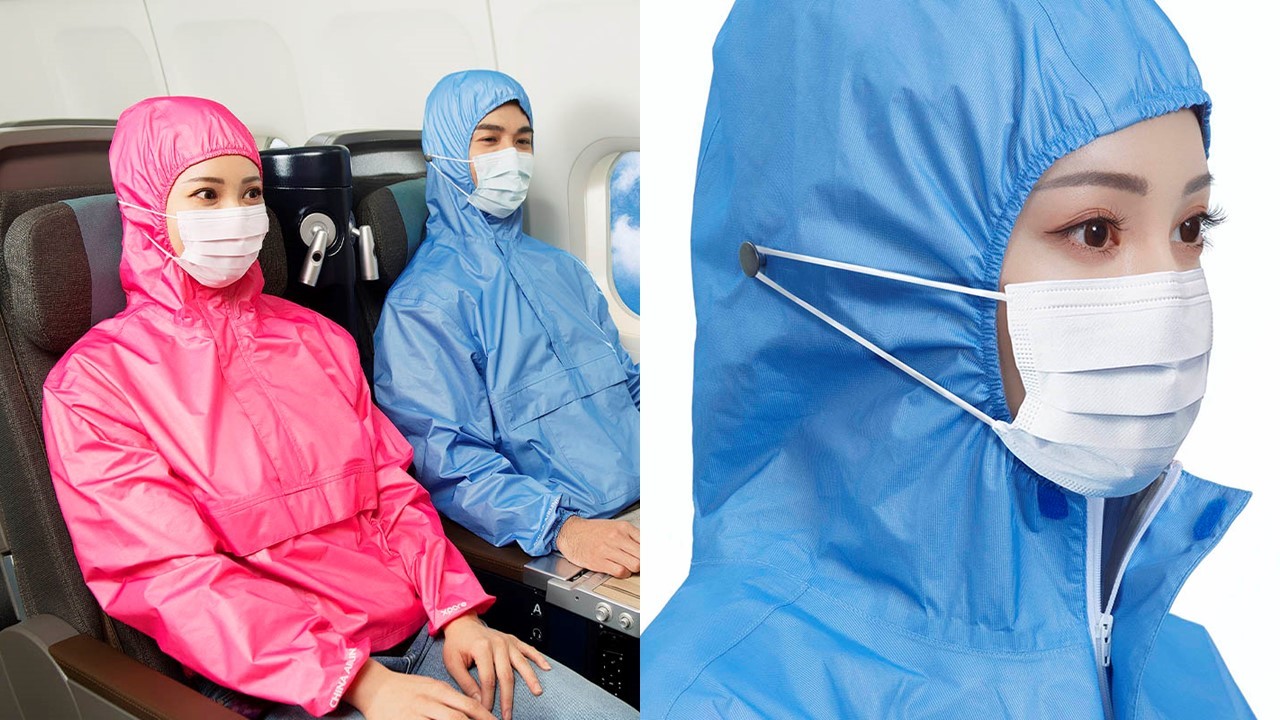
Source: China Airlines eMall website…is this how we will travel in the future?